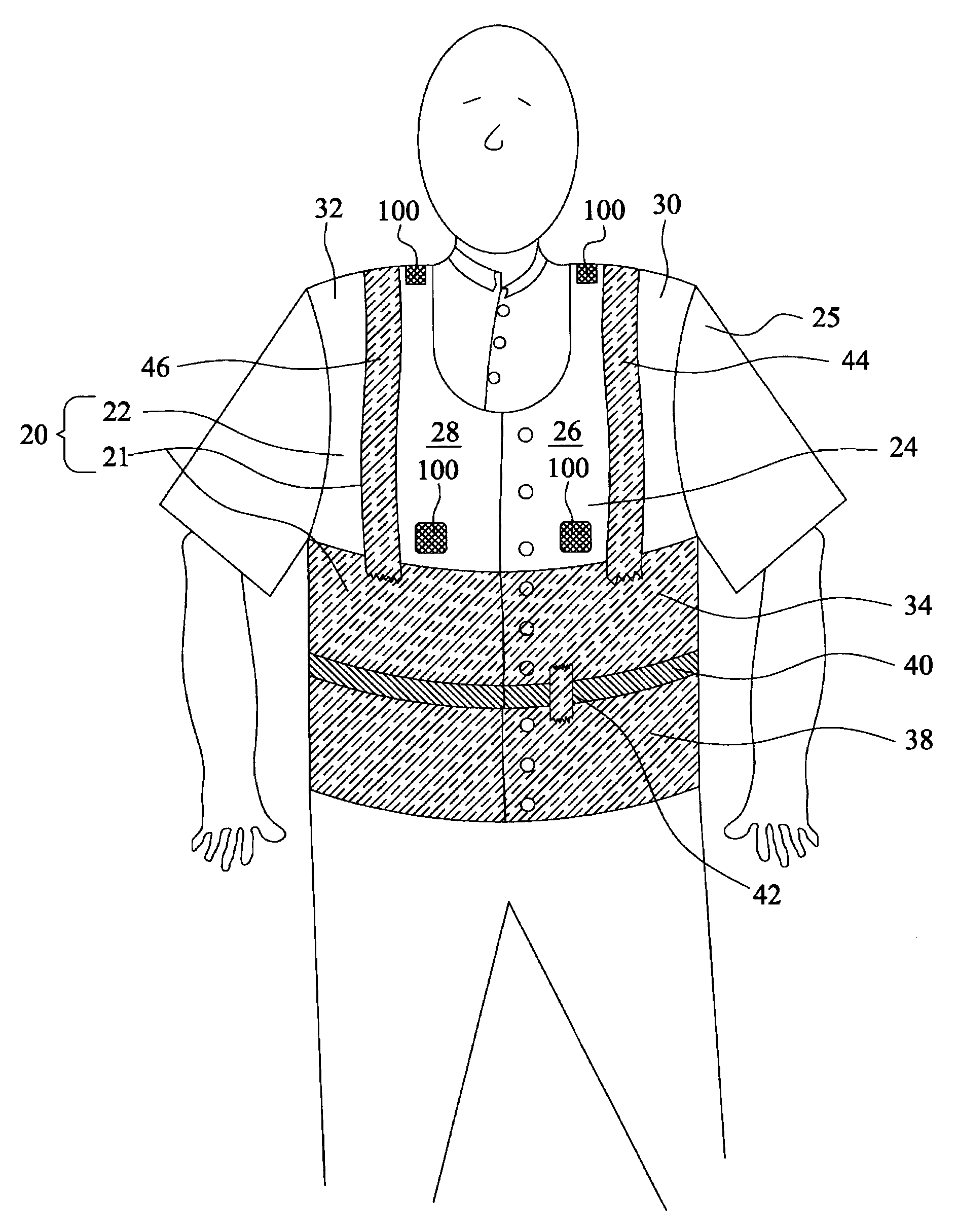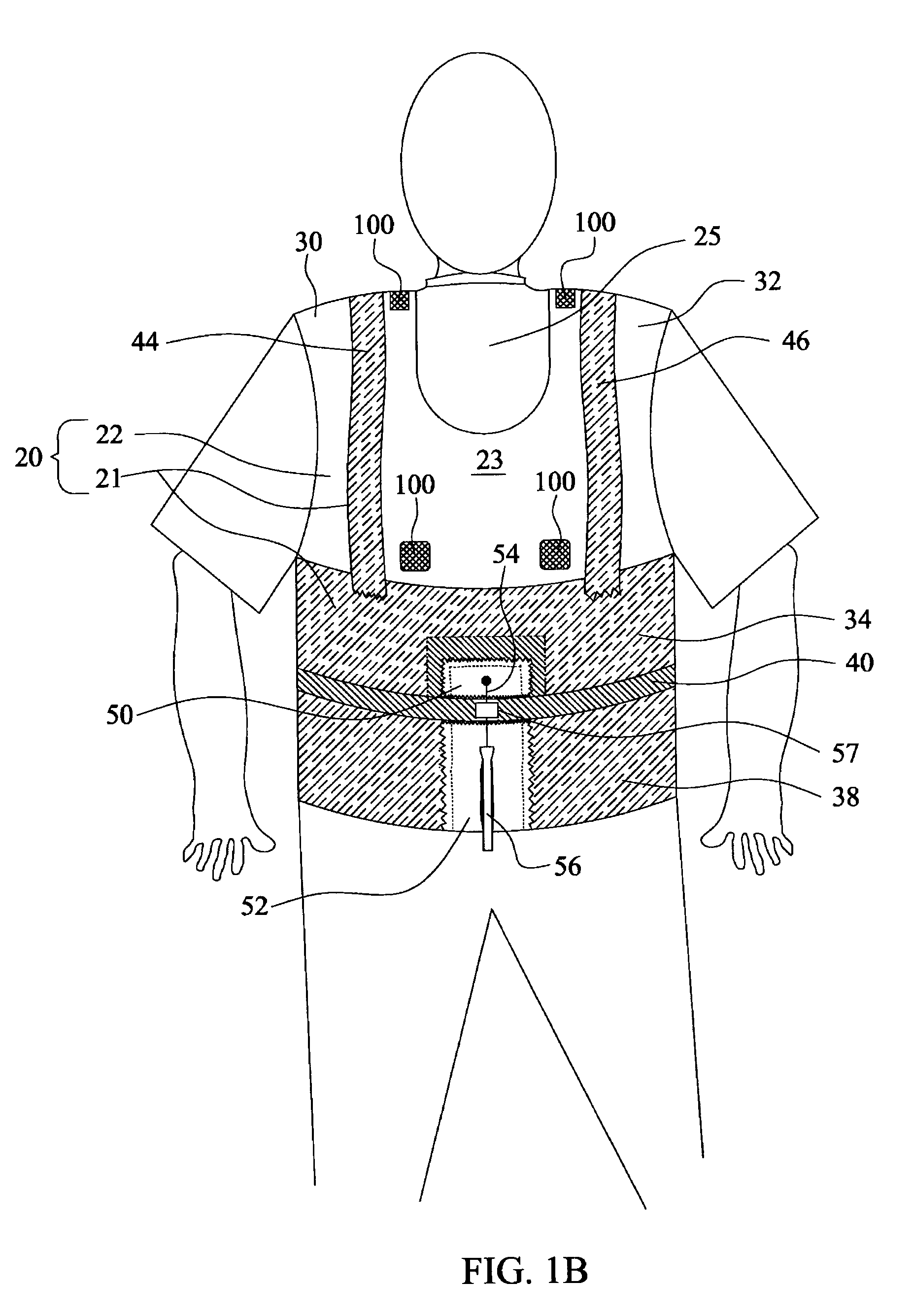Ultra-broadband antenna incorporated into a garment
a technology of ultra-broadband antennas and garments, applied in the field of ultra-broadband antennas, can solve the problems of low gain of frequencies higher than 200 mhz, too small for efficient operation, etc., and achieve the effect of reducing the energy that flows into the body
- Summary
- Abstract
- Description
- Claims
- Application Information
AI Technical Summary
Benefits of technology
Problems solved by technology
Method used
Image
Examples
Embodiment Construction
[0021]Referring to FIGS. 1A and 1B, an antenna garment 20 worn by a human wearer 25 is shown that includes a first antenna 21 integrated into a first garment 22. First antenna 21 operates very efficiently over a frequency range of about 30 MHz to about 90 MHz. First antenna 21 is integrated into first garment 22 so that first antenna 21 offers no distinctive visual signature that would identify the person wearing antenna garment 20 as a radio operator. First garment 22 is made of an electrically nonconductive material such as a woven fabric selected from the group that includes cotton, wool, polyester, nylon, Kevlar, rayon, and the like. The electrically conductive material of first garment 22 may also include polyurethane for waterproofing. First garment 22 has an outer layer with an anterior or front section 24 and a dorsal or back region 23. From the perspective of the human wearer 25, front section 24 of first garment 22 includes a left anterior front section 26 and a right ante...
PUM
 Login to View More
Login to View More Abstract
Description
Claims
Application Information
 Login to View More
Login to View More - R&D
- Intellectual Property
- Life Sciences
- Materials
- Tech Scout
- Unparalleled Data Quality
- Higher Quality Content
- 60% Fewer Hallucinations
Browse by: Latest US Patents, China's latest patents, Technical Efficacy Thesaurus, Application Domain, Technology Topic, Popular Technical Reports.
© 2025 PatSnap. All rights reserved.Legal|Privacy policy|Modern Slavery Act Transparency Statement|Sitemap|About US| Contact US: help@patsnap.com



